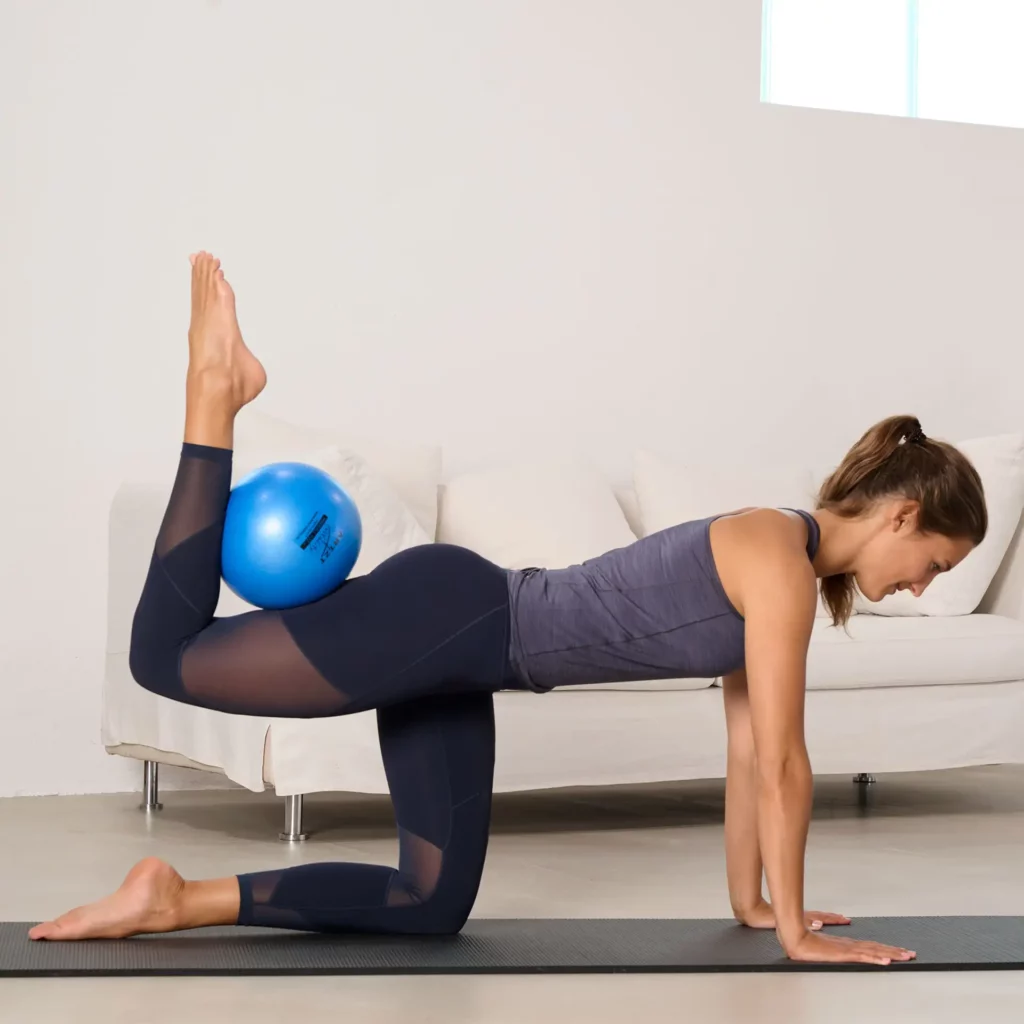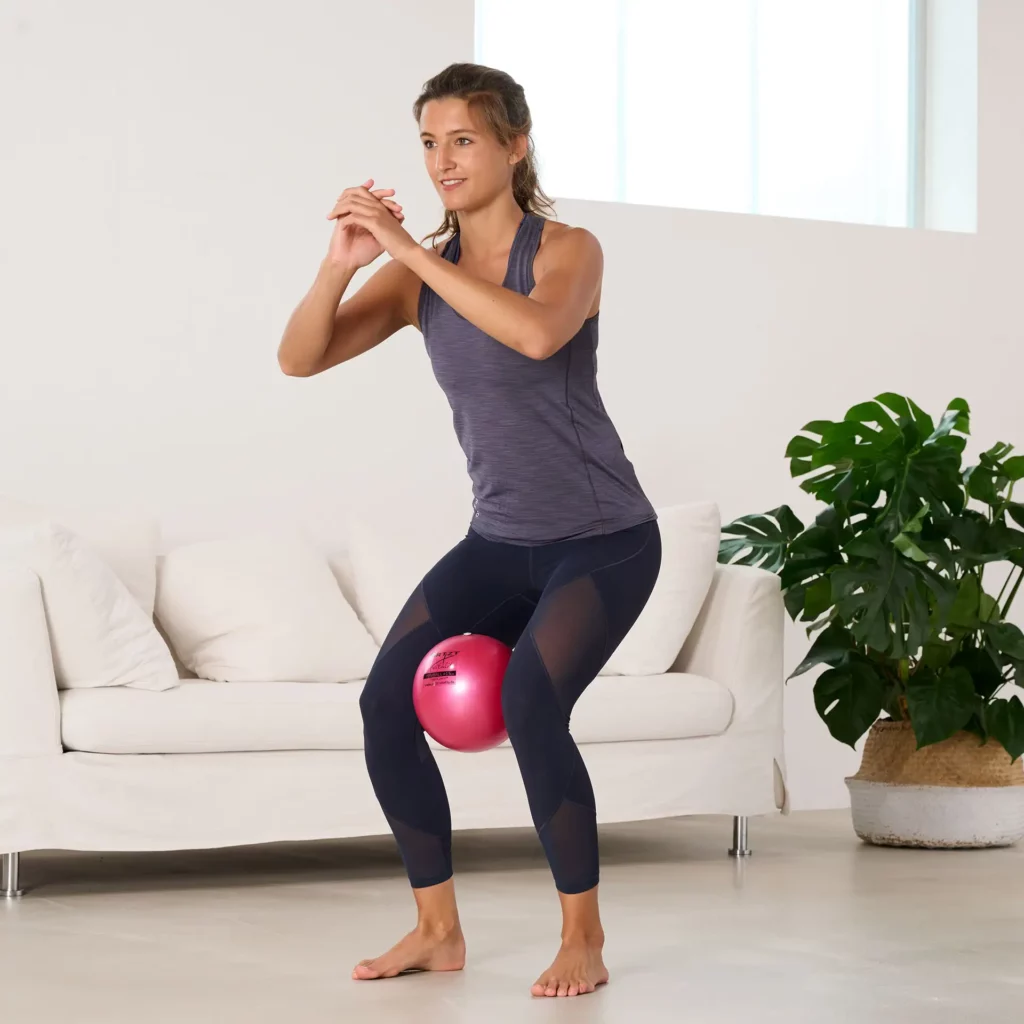The Pilates mini ball, a versatile and compact piece of equipment, has gained popularity among fitness enthusiasts and professionals alike. This small yet powerful tool can enhance your Pilates routine, providing additional support, resistance, and challenge. Incorporating a Pilates mini ball into your workouts can lead to improved strength, flexibility, and overall body awareness. This article will explore how to effectively use a Pilates mini ball to maximise your exercise routine.
Understanding the Pilates Mini Ball
The Pilates mini ball, typically around 25 cm in diameter, is designed to be lightweight and easy to handle. Its soft, inflatable structure allows for a variety of exercises that target different muscle groups. The ball can be used to increase stability, improve posture, and enhance core strength, making it an essential addition to any Pilates practice.
Benefits of Using a Pilates Mini Ball
Incorporating a Pilates mini ball into your workouts offers numerous benefits. Firstly, it provides an unstable surface that forces the body to engage stabilising muscles, particularly in the core. This engagement not only strengthens these muscles but also improves balance and coordination.
Secondly, the mini ball can assist in deepening stretches and enhancing flexibility. By placing the ball under specific body parts, individuals can achieve a greater range of motion and relieve tension in tight areas. This is particularly beneficial for those who spend long hours sitting or engaging in repetitive movements.
Choosing the Right Pilates Mini Ball
When selecting a Pilates mini ball, consider factors such as size, firmness, and material. A ball that is too firm may not provide the desired comfort during exercises, while one that is too soft may not offer sufficient resistance. It is advisable to choose a ball that is slightly inflated, allowing for versatility in various exercises.
Additionally, ensure that the ball is made from high-quality, durable materials to withstand regular use. Many Pilates mini balls come with a pump for easy inflation, which is a convenient feature to look for.
Beyond these practical considerations, it’s also worth noting the aesthetic appeal of the Pilates mini ball. Available in a variety of colours and designs, these balls can add a touch of vibrancy to your workout space, making exercise feel more enjoyable and engaging. Furthermore, the tactile experience of the soft surface can enhance your connection to the exercises, encouraging mindfulness and focus during your practice. Many enthusiasts find that the visual and physical attributes of their equipment can motivate them to maintain a consistent routine, ultimately leading to better results.
Moreover, the versatility of the Pilates mini ball extends beyond traditional Pilates exercises. It can be incorporated into strength training, yoga, and rehabilitation routines, making it an excellent tool for individuals at various fitness levels. Whether you’re a seasoned practitioner or a beginner, the mini ball can be adapted to suit your needs, providing a fun and effective way to diversify your workouts and keep your fitness journey exciting.
Incorporating the Mini Ball into Your Routine
Integrating a Pilates mini ball into your exercise routine can be done seamlessly, whether you are a beginner or an experienced practitioner. The following sections outline various exercises that can be enhanced with the use of a mini ball.
Core Strengthening Exercises
Core strength is fundamental in Pilates, and the mini ball can intensify traditional core exercises. For instance, during the classic Pilates exercise known as the “Hundred,” placing the mini ball between the knees can engage the inner thigh muscles while maintaining core stability. This added resistance helps to deepen the contraction of the abdominal muscles, resulting in a more effective workout.
Another excellent exercise is the “Ball Pass.” Begin by lying on your back with the mini ball held between your hands. Lift your legs and arms simultaneously, passing the ball from your hands to your feet. This movement challenges the core and improves coordination while promoting flexibility in the hips and shoulders. The dynamic nature of this exercise not only engages multiple muscle groups but also enhances your body awareness, which is a crucial aspect of the Pilates philosophy.
Enhancing Flexibility and Stretching
The Pilates mini ball can also be used to enhance flexibility and stretching routines. For example, when performing a seated forward bend, placing the ball under your thighs can help to deepen the stretch in the hamstrings. This allows for a greater range of motion, making the stretch more effective. The mini ball acts as a gentle prop, encouraging proper alignment and allowing you to focus on your breath and the sensations in your body.
Additionally, the mini ball can be utilised in a variety of lying stretches. For instance, lying on your back with the ball under your lower back can provide support while allowing for a gentle spinal extension. This position can help alleviate tension and promote relaxation in the entire back area. Incorporating the mini ball into your stretching routine not only aids in muscle recovery but also fosters a sense of mindfulness, as you become more attuned to your body’s needs and limitations during each stretch. Engaging with the ball in this way can transform your practice, making each session feel more restorative and enriching.

Safety Tips for Using a Pilates Mini Ball
While the Pilates mini ball is a fantastic tool for enhancing workouts, it is essential to use it safely to avoid injury. Here are some tips to ensure a safe and effective experience:
Maintain Proper Alignment
Proper alignment is crucial when using a mini ball. Ensure that your body is aligned correctly during exercises to prevent strain on the joints. For instance, when performing exercises like the “Bridge,” keep your knees aligned with your hips and feet flat on the floor. Learn more about why Pilates Soft Balls are essential for your workout routine.
Additionally, focus on engaging the core throughout each movement. This engagement not only protects the lower back but also maximises the effectiveness of the exercise. Remember, the mini ball is designed to challenge your stability, so maintaining a strong foundation is key. As you progress, you may find that small adjustments in your posture can lead to significant improvements in your overall performance.
Listen to Your Body
It is vital to listen to your body when incorporating a mini ball into your routine. If you experience discomfort or pain during an exercise, stop and reassess your form or consider modifying the movement. It is better to perform exercises correctly with less intensity than to risk injury by pushing through discomfort.
Moreover, consider warming up adequately before you begin your session. A few minutes of gentle stretching or light cardio can prepare your muscles and joints for the workout ahead, enhancing your overall experience. Hydration is equally important; ensure you drink enough water before, during, and after your workout to keep your body functioning optimally. Remember, the goal of using a Pilates mini ball is to improve strength and flexibility, not to create unnecessary strain or discomfort.
Creating a Balanced Workout Routine
To fully benefit from the Pilates mini ball, it is essential to create a balanced workout routine that incorporates various exercises targeting different muscle groups. A well-rounded routine should include core strengthening, flexibility, and stability exercises.
Sample Workout Routine with a Mini Ball
Here is a sample workout routine that incorporates the Pilates mini ball:
- Warm-Up: Begin with gentle stretches, focusing on the neck, shoulders, and spine.
- Core Activation: Perform the “Hundred” with the mini ball between your knees for 1 minute.
- Ball Pass: Complete 10 repetitions of the “Ball Pass” exercise.
- Bridge with Ball: Perform 10-15 repetitions of the “Bridge” with the mini ball under your feet.
- Seated Forward Bend: Hold for 30 seconds with the ball under your thighs.
- Cool Down: Finish with gentle stretches, focusing on the back and hamstrings.
This routine can be adjusted based on individual fitness levels and goals. The key is to maintain consistency and gradually increase the intensity as strength and stability improve.

Conclusion
The Pilates mini ball is an invaluable tool for enhancing workouts and achieving fitness goals. By incorporating this versatile piece of equipment into your routine, individuals can improve core strength, flexibility, and overall body awareness. Remember to maintain proper alignment, listen to your body, and create a balanced workout routine to maximise the benefits of using a Pilates mini ball.
Whether you are a seasoned Pilates practitioner or just starting your fitness journey, the mini ball can add a new dimension to your exercises. Embrace the challenge, enjoy the process, and watch as your strength and flexibility flourish with each session.

